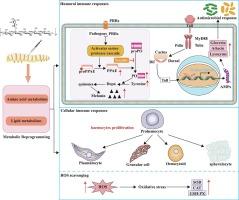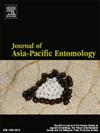Poria cocos polysaccharides alleviate cyclophosphamide-induced immunosuppression effects in silkworm and their metabolic profiling analysis
Abstract
The present study investigated the immune regulatory mechanisms of Poria cocos polysaccharides (PS) in a cyclophosphamide (CTX)-induced immunosuppression silkworm model. We found that PS increased the superoxide dismutase (SOD), catalase (CAT) and glutathione peroxidase (GSH-Px) activities, as well as reactive oxygen species (ROS) levels in the fat body or haemocytes of CTX-treated silkworms. PS also strongly stimulated the immunity of silkworms by increasing haemocyte counts and PO activity and upregulating the mRNA expression of immune-related genes. We further investigated the metabolic profile of the fat body after PS treatment using liquid chromatography–massspectrometry/mass spectrometry (LC–MS/MS) and identified 236 differentially expressed metabolites. Among them, nine metabolites related to amino acid metabolism were present at high levels in the PS-treated group, whereas the contents of metabolites involved in sphingolipid metabolism and alpha-linolenic acid metabolism were significantly decreased after PS treatment. The amino acid metabolism pathways and lipid metabolism pathways were found to be significantly altered in the PS-treated group, which indicates that PS may regulate the immune system of silkworms by reprogramming lipid and amino acid metabolism. This study provides new insight into the immune regulatory effect of PS in animals.


 求助内容:
求助内容: 应助结果提醒方式:
应助结果提醒方式:


